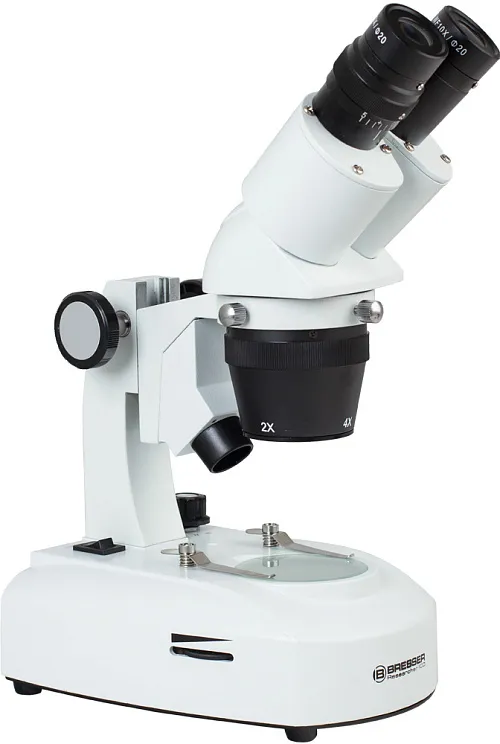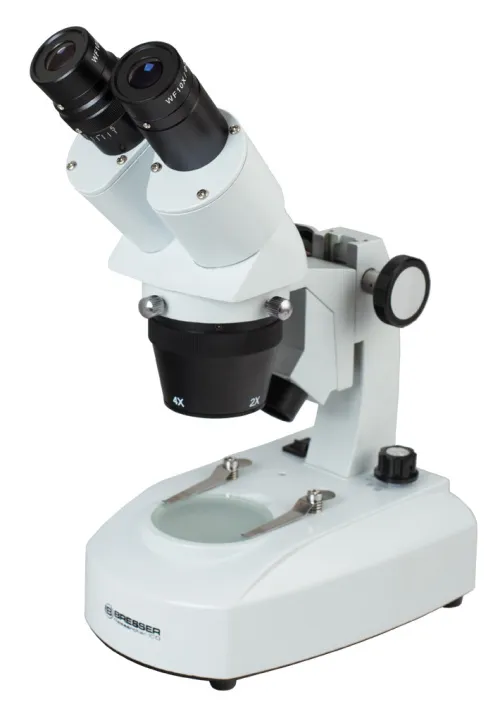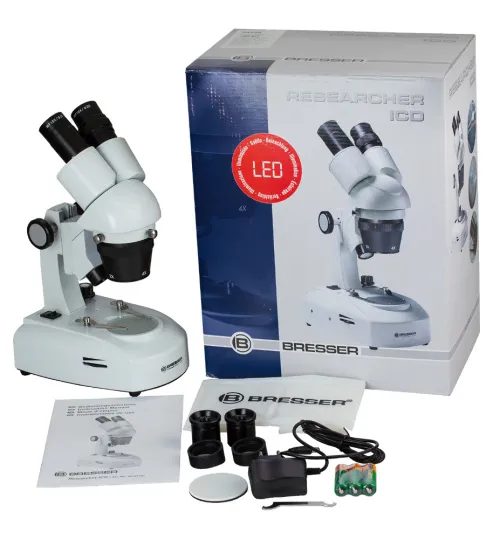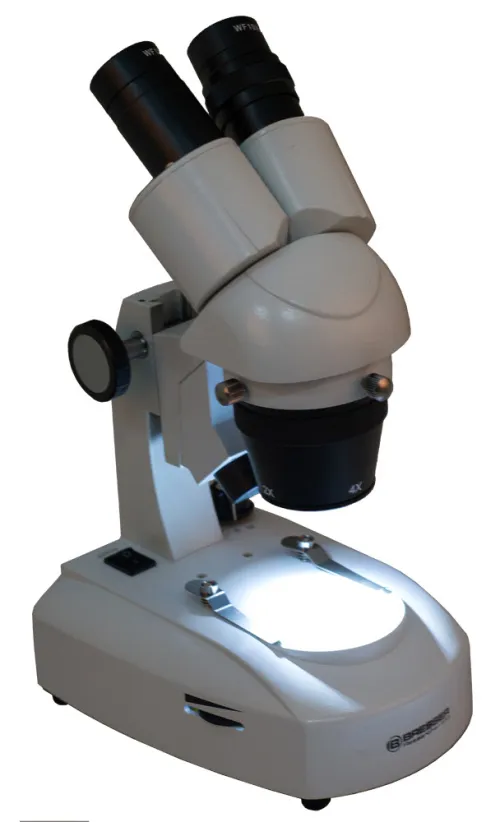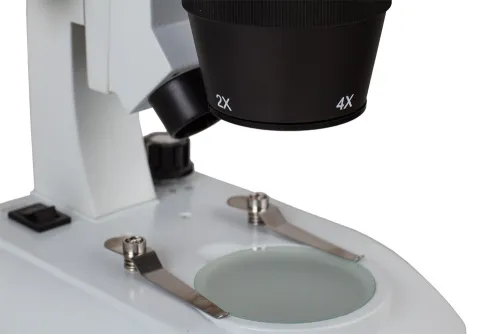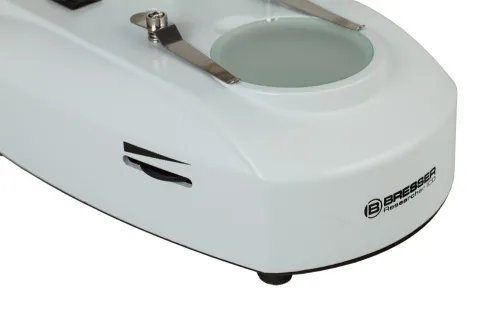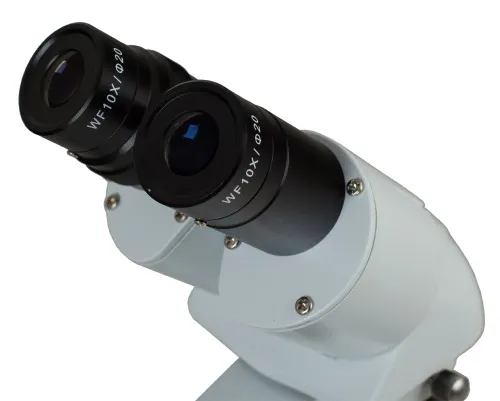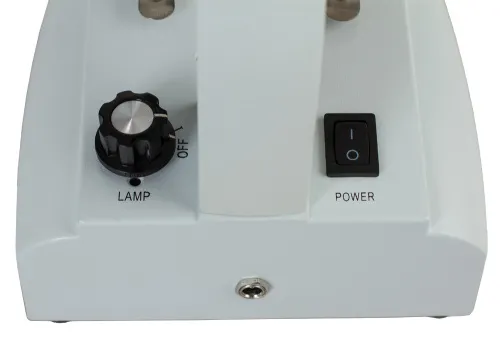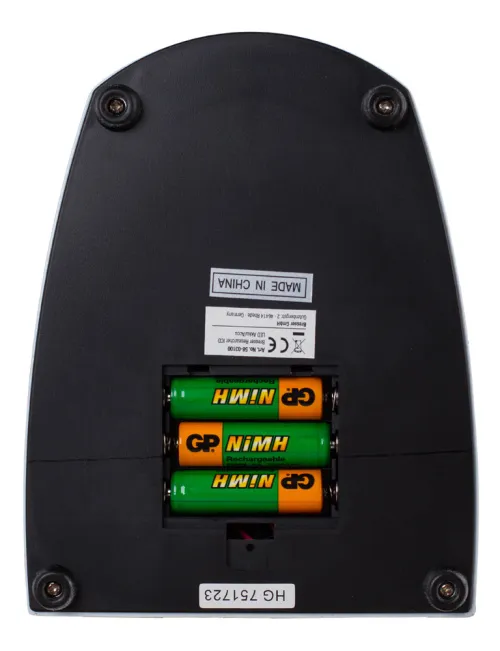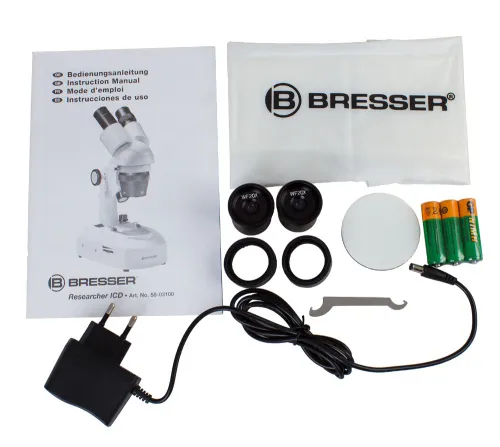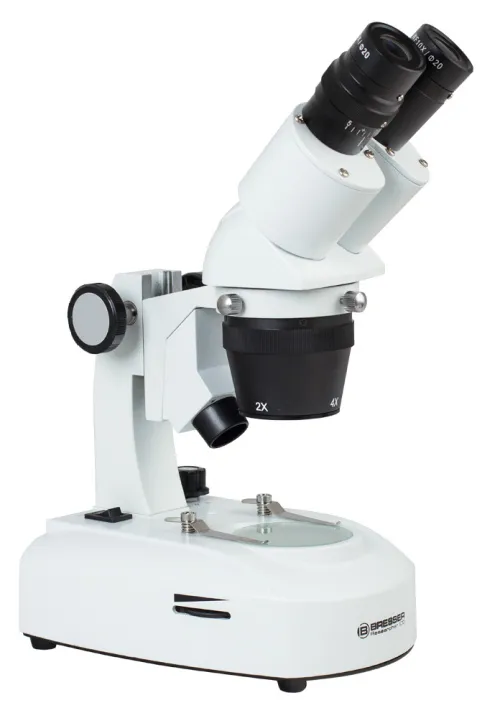Bresser Researcher ICD LED 20–80x Microscope
Stereo microscope. Binocular head. Magnification: 20–80x
| Product ID | 64646 |
| Brand | Bresser GmbH, Germany |
| Warranty | 2 years |
| EAN | 4007922150215 |
| Package size (LxWxH) | 36x29x18 cm |
| Shipping Weight | 2.81 kg |
Bresser Researcher ICD LED 20–80x Microscope is an all-purpose instrument: it is a stereo model that also serves as a biological one. The device is equipped with upper and lower LED lights that can operate independently or both at once. Brightness level is adjustable. The binocular head is 360° rotatable for comfortable observations. The microscope comes with two pairs of wide field eyepieces with 10x and 20x magnification. The diopter adjustment mechanism allows users to adjust the instrument to their individual needs. The microscope is powered by an electrical outlet; however, the device can work completely autonomously.
The kit includes:
- Bresser Researcher ICD LED 20–80x Microscope
- WF10x and WF20x eyepieces
- Rechargeable batteries
- Pouch for storage and transportation
- Wrench to adjust the friction
- Rubber eyecups
- AC Adapter
- User manual and 5-year warranty
| Product ID | 64646 |
| Brand | Bresser GmbH, Germany |
| Warranty | 2 years |
| EAN | 4007922150215 |
| Package size (LxWxH) | 36x29x18 cm |
| Shipping Weight | 2.81 kg |
| Type | stereo/instrumental |
| Microscope head type | binocular |
| Head | 360 ° rotatable |
| Magnification, x | 20 — 80 |
| Eyepieces | WF10x, WF20x |
| Objectives | 2x, 4x |
| Working distance, mm | 68 |
| Interpupillary distance, mm | 55 — 75 |
| Stage features | fixed, with clips |
| Eyepiece diopter adjustment, diopters | ±5 |
| Illumination | LED |
| Brightness adjustment | ✓ |
| Power supply | 220–240V |
| Power supply: batteries/built-in battery | yes |
| Application | for applied research |
| Illumination location | dual |
| Research method | bright field |
| Pouch/case/bag in set | dust cover |
We have gathered answers to the most frequently asked questions to help you sort things out
Find out why studying eyes under a microscope is entertaining; how insects’ and arachnids’ eyes differ and what the best way is to observe such an interesting specimen
Read this review to learn how to observe human hair, what different hair looks like under a microscope and what magnification is required for observations
Learn what a numerical aperture is and how to choose a suitable objective lens for your microscope here
Learn what a spider looks like under microscope, when the best time is to take photos of it, how to study it properly at magnification and more interesting facts about observing insects and arachnids
This review for beginner explorers of the micro world introduces you to the optical, illuminating and mechanical parts of a microscope and their functions
Short article about Paramecium caudatum - a microorganism that is interesting to observe through any microscope

